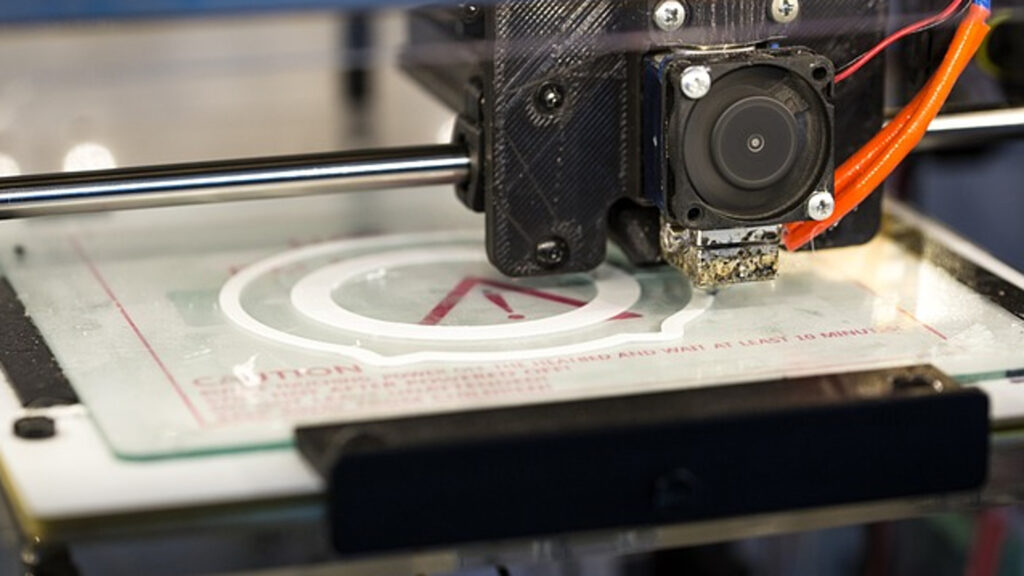Reports of 3D printing’s demise have been greatly exaggerated, writes our columnist SJ. Government support for advanced manufacturing is on its way, offering new opportunities for companies to explore additive methods
Hold back on filling your glasses for now! I don’t think it’s time just yet to drink a toast to mark the sad passing of our dear friend 3D printing. But everywhere I look, I’m seeing articles reporting its demise. Time is up for 3D printing, the headlines say. May it rest in peace.
Yes, the mood does feel very grim in this industry right now. Opportunistic investors have moved on, to lavish their attention instead on artificial intelligence. The investment free-flow that 3D printing previously saw has dried up. Opportunities for innovation are decreasing, while lay-offs are on the rise. And a weird cycle of merger and acquisition activity is certainly going to make for some awkward ‘family’ dynamics during this year’s holiday season.
But I’m here to tell you that all is not lost. And if, like me, you’re in the industry, there’s a 99% chance that none of this is your fault anyway.
We’ve come a long way
The fact is that previous levels of investment in 3D printing came from investors who were living in a completely different world from ours.
These investors are perpetually looking for the next Uber or the next Apple. They don’t care about your product, or the solutions you provide. They simply want the biggest, fastest return on their investment.
In case I’m not being clear, let me spell it out for you, especially for those of you working at start-ups: you were never set up for success. These investors never intended for yours to be a thriving, healthy company, or else they would have focused more on employees and less on profit. Instead, they gave you chump change and expected you to build complex hardware in the form of multi-million-dollar additive machines with accompanying high-end software.
It was a big ask. And I think we all need to acknowledge that it wasn’t a fair one.
Imagine what we could have achieved, had we been given more resources, more support, more mentorship, more time. When I was younger, and would get frustrated that I wasn’t old enough, or tall enough, or smart enough to achieve some task, chore or sporting achievement, my mother would always remind me of the idiom: “Rome wasn’t built in a day.” In fact, if you’re curious, it took 1,229 years.
To put the problem into perspective, consider that additive manufacturing is still only 36 years old. It’s still in its infancy, really. So let’s all have some compassion for ourselves. For our growth. We’ve accomplished so much and still have so much further to go.
My outlook is still positive, pending more government support for advanced manufacturing technologies — where additive undoubtedly has a huge role to play
Breaking the bottleneck
In my opinion, not all hope is lost. It’s just stuck in traffic. My latest career move, which has propelled me into the world of aerospace, has drastically altered my view of how 3D printing fits into manufacturing.
In short, my outlook is still positive, pending more government support for advanced manufacturing technologies — where additive undoubtedly has a huge role to play.
The necessary funding may take a while to arrive, certainly. The United Kingdom formalised and announced its additive manufacturing strategy around 2018, with a heavy focus on supply chains, skills and standards. The United States has finally begun to find its footing, too, with a strategy released in 2022, in response to pandemic-induced supply chain woes. This focuses on developing and implementing advanced manufacturing, building up the workforce and reducing supply chain vulnerabilities.
And both the US and the UK economies can boast many non-profits and private/ public partnership-type entities on a mission to ensure that government funding gets where it needs to go: to companies, projects, technologies, universities and so on. But these organisations are just the middlemen. The main bottleneck, as always, is the traffic jam of bureaucracy.
So some entities may well have been approved to award millions of dollars — but only as soon as the money actually hits their account. And it will only arrive once government officials come to consensus and pass legislation on funding for the next year, or the next approval cycle.
It’s very frustrating having to wait on such an extended timeline when you have employees to pay and fast-moving, innovative competitors. In fact, it might even seem that making a deal with some shady investor might provide some much-needed, short-term respite.
But woah there: that’s starting to sound eerily familiar. It’s a toxic story that keeps repeating itself. (Yes, dear readers, I am leaning in and giving you a cheeky wink.)
I can confidently say that investment is certainly on the way. It’s coming. Additive manufacturing has been clearly labelled as a critical technology by governments worldwide. How long it takes that money to reach the industry, where it can actually be put to work, I cannot say. But until then, sit tight and instead pour a drink for yourself. You’ve certainly earned it.
About the author:
SJ is a metal additive engineer aka THEE Hottie of Metal Printing. SJ’s work involves providing additive manufacturing solutions and 3D printing of metal parts to help create a decarbonised world.
This article first appeared in DEVELOP3D Magazine
DEVELOP3D is a publication dedicated to product design + development, from concept to manufacture and the technologies behind it all.
To receive the physical publication or digital issue free, as well as exclusive news and offers, subscribe to DEVELOP3D Magazine here






